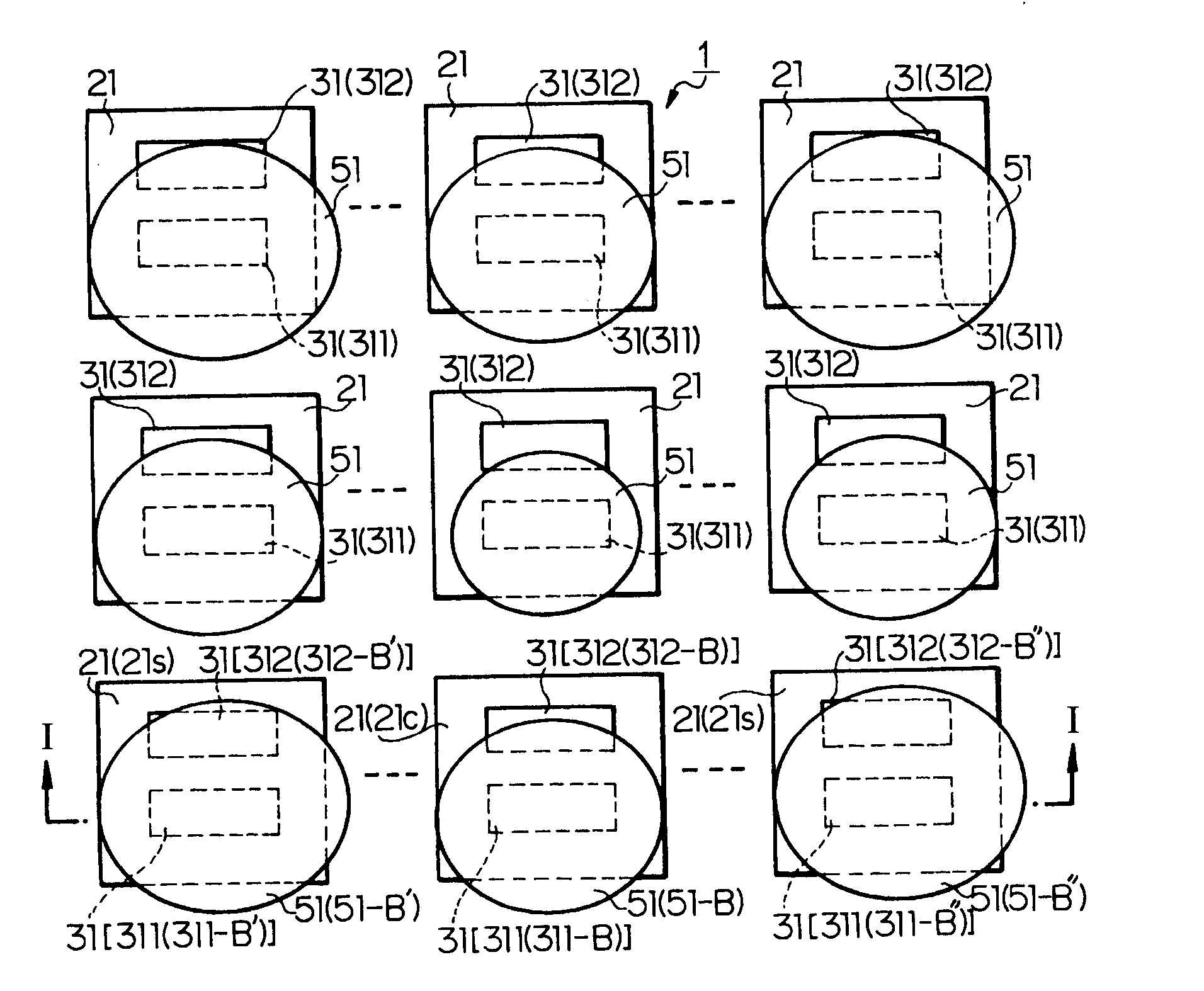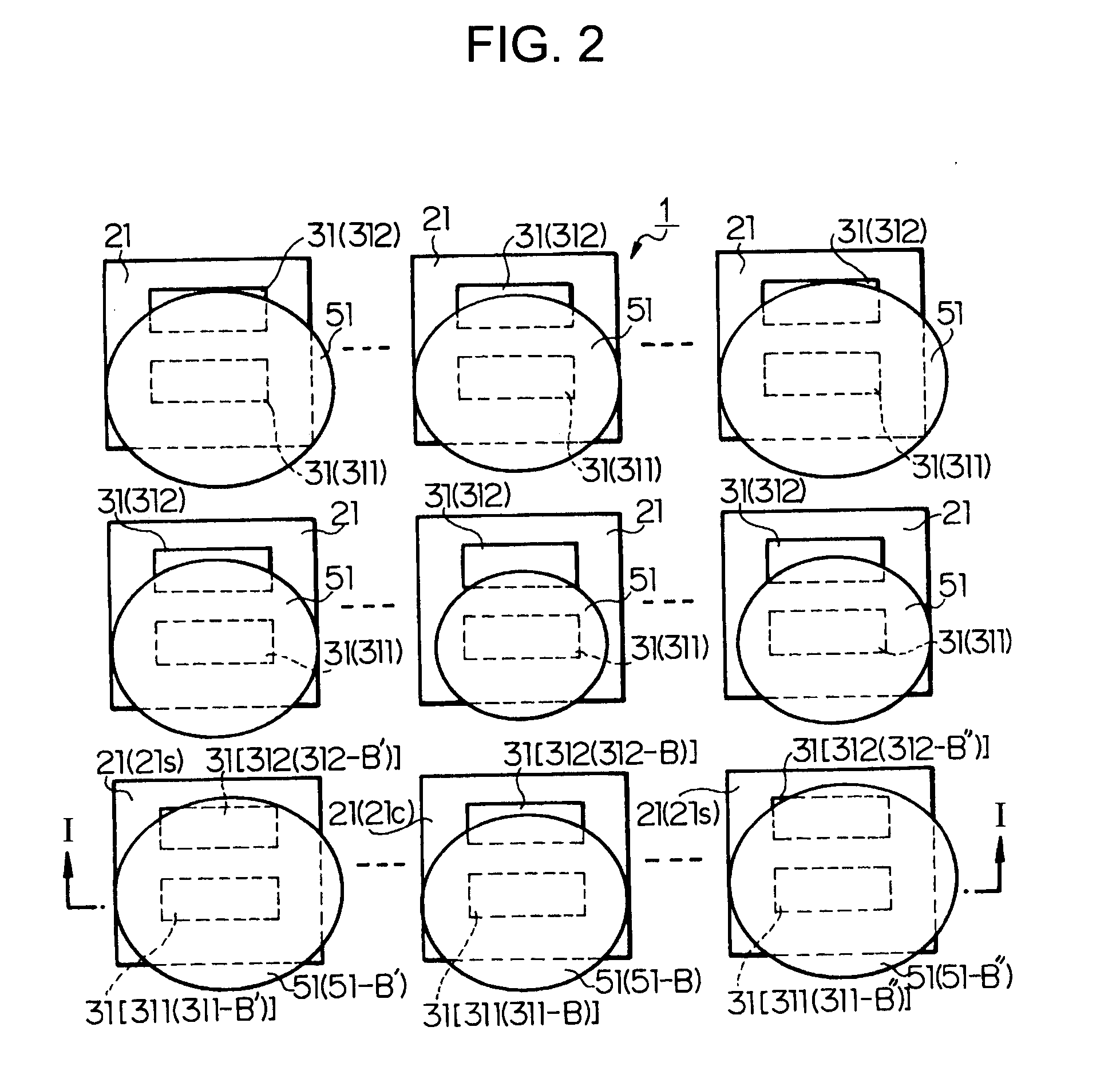Solid-state imaging device and signal processing circuit
a solid-state imaging and signal processing circuit technology, applied in the direction of radioation control devices, instruments, television systems, etc., can solve the problems of poor shading, achieve the effect of high sensitivity, poor shading, and high-quality captur
- Summary
- Abstract
- Description
- Claims
- Application Information
AI Technical Summary
Benefits of technology
Problems solved by technology
Method used
Image
Examples
first embodiment
[0023] A solid-state imaging device according to a first embodiment of the present invention will be described with reference to FIGS. 1 and 2. FIG. 2 is a plan view of the solid-state imaging device, and FIG. 1 is a schematic cross-sectional view of the solid-state imaging device, taken along a line I-I of FIG. 2.
[0024] As shown in FIGS. 1 and 2, three or more pixel regions 21 are formed on a semiconductor substrate 11 in at least one direction (in FIG. 2, two directions) of two different directions along a principal surface of the semiconductor substrate 11. Each of the pixel regions 21 includes a plurality of photoelectric conversion regions 31, e.g., two photoelectric conversion regions 31 (311 and 312). The photoelectric conversion regions 311 and 312 have different sensitivities (light sensitivities). The photoelectric conversion region 311 has a higher sensitivity than the photoelectric conversion region 312.
[0025] In this solid-state imaging device, the high-sensitivity ph...
second embodiment
[0036] The first embodiment may cause worse shading in low-sensitivity pixels as a result of shading correction in high-sensitivity pixels. A solid-state imaging device according to a second embodiment of the present invention corrects for worse shading caused in low-sensitivity pixels.
[0037] In the second embodiment, a signal processing circuit (not shown) external to or on the same chip as the solid-state imaging device of the second embodiment corrects for gains of the central pixel region 21c and the peripheral pixel regions 21s shown in FIGS. 1 and 2 in accordance with the f values of the condenser lenses 51.
[0038] In the solid-state imaging device, for example, if the high-sensitivity photoelectric conversion regions 311 in the central and peripheral pixel regions 21c and 21s of the pixel regions 21 shown in FIGS. 1 and 2 are suppressed from causing shading, the low-sensitivity photoelectric conversion regions 312 may cause worse shading. In this case, the signal processing ...
third embodiment
[0039]FIG. 3 is a block diagram of a signal processing circuit 5 according to a third embodiment of the present invention.
[0040] As shown in FIG. 3, the signal processing circuit 5 includes an analog-to-digital (AD) conversion circuit 51H for performing AD conversion on a signal SH output from a high-sensitivity photoelectric conversion region, and an AD conversion circuit 51L for performing AD conversion on a signal SL output from a low-sensitivity photoelectric conversion region.
[0041] The AD conversion circuit 51H is connected to a memory 52H for temporarily storing the digital signal converted by the AD conversion circuit 51H, and the AD conversion circuit 51L is connected to a memory 52L for temporarily storing the digital signal converted by the AD conversion circuit 51L. The memory 52L is connected to an amplification circuit 53 for multiplying the signal read into the memory 52L by a coefficient that is determined for each pixel region. The amplification circuit 53 is conn...
PUM
 Login to View More
Login to View More Abstract
Description
Claims
Application Information
 Login to View More
Login to View More - R&D
- Intellectual Property
- Life Sciences
- Materials
- Tech Scout
- Unparalleled Data Quality
- Higher Quality Content
- 60% Fewer Hallucinations
Browse by: Latest US Patents, China's latest patents, Technical Efficacy Thesaurus, Application Domain, Technology Topic, Popular Technical Reports.
© 2025 PatSnap. All rights reserved.Legal|Privacy policy|Modern Slavery Act Transparency Statement|Sitemap|About US| Contact US: help@patsnap.com



